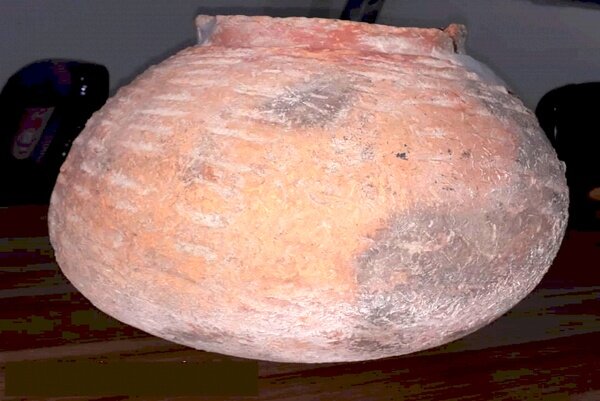Ancient jug discovered accidentally in northwestern Iran

TEHRAN – An ancient clay jug has recently been discovered by security guards while patrolling one of the historical sites of the city of Bonab in the northwestern province of East Azarbaijan.
Initial assessments suggest that the object date from prehistorical times, a senior police official in charge of protecting cultural heritage has said.
The historical relic was handed over to the province’s Cultural Heritage, Tourism and Handicrafts Department for further studies, Kazem Dadashi announced on Saturday.
The purpose of the routine patrol of guards is to protect, preserve, control and monitor the historical and cultural sites, ancient hills, and monuments, the official added.
Iranian pottery presents a continuous history from the beginning of Iranian history until the present day. Some experts believe that pottery started in the Iranian plateau when agriculture came into existence and cultivation started by primitive races of this land, people made utensils of baked clay to meet their needs.
Fingerprints of primitives in Iran can be seen on relics. The first earthenware was mainly of two types: black utensils and red ones, both were hardly complicated products.
Azarbaijan region has the cradle of several ancient civilizations. It formed part of Urartu and later of Media. In the 4th century BC, it was conquered by Alexander the Great and was named Atropatene after one of Alexander’s generals, Atropates, who established a small kingdom there. Persians, however, regained control of the vast land under the Sasanian rule in the 3rd century CE.
ABU/AFM
Leave a Comment